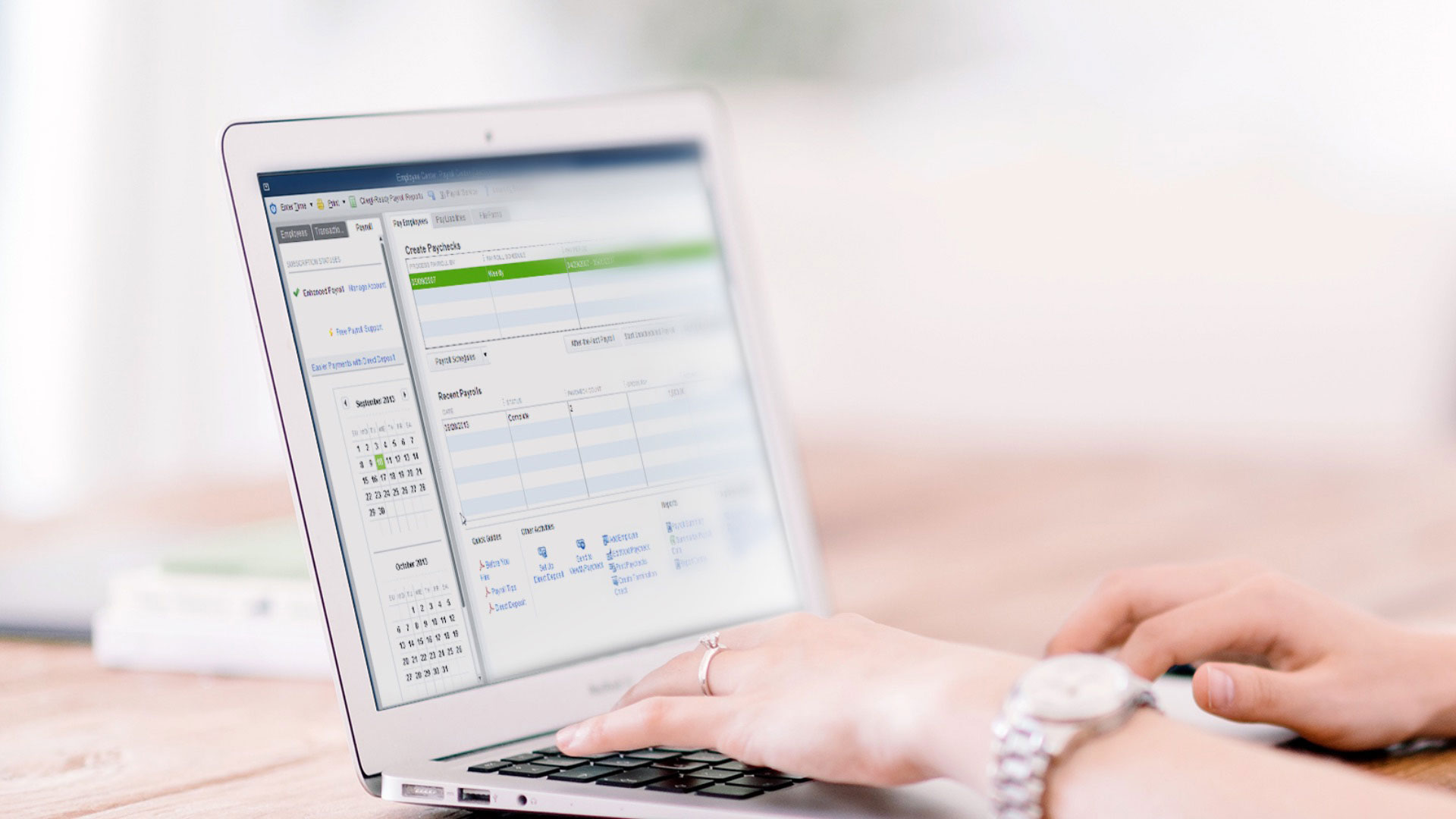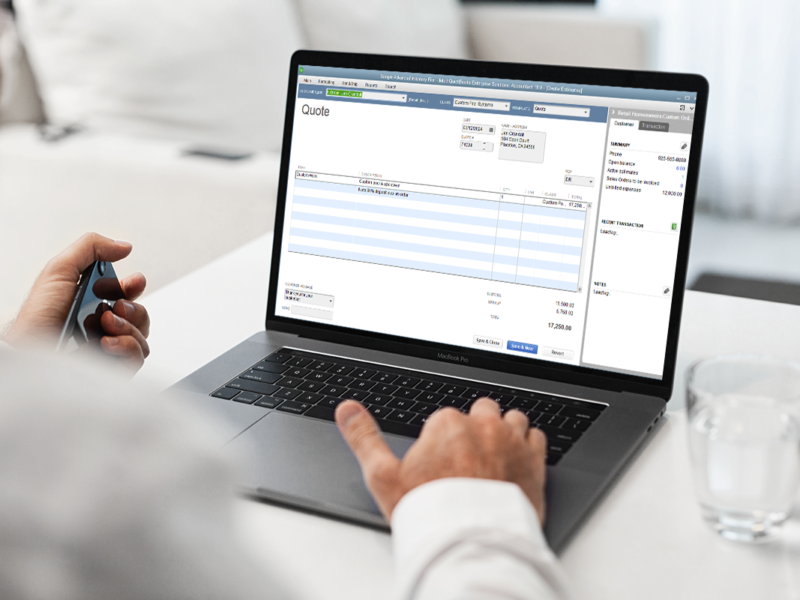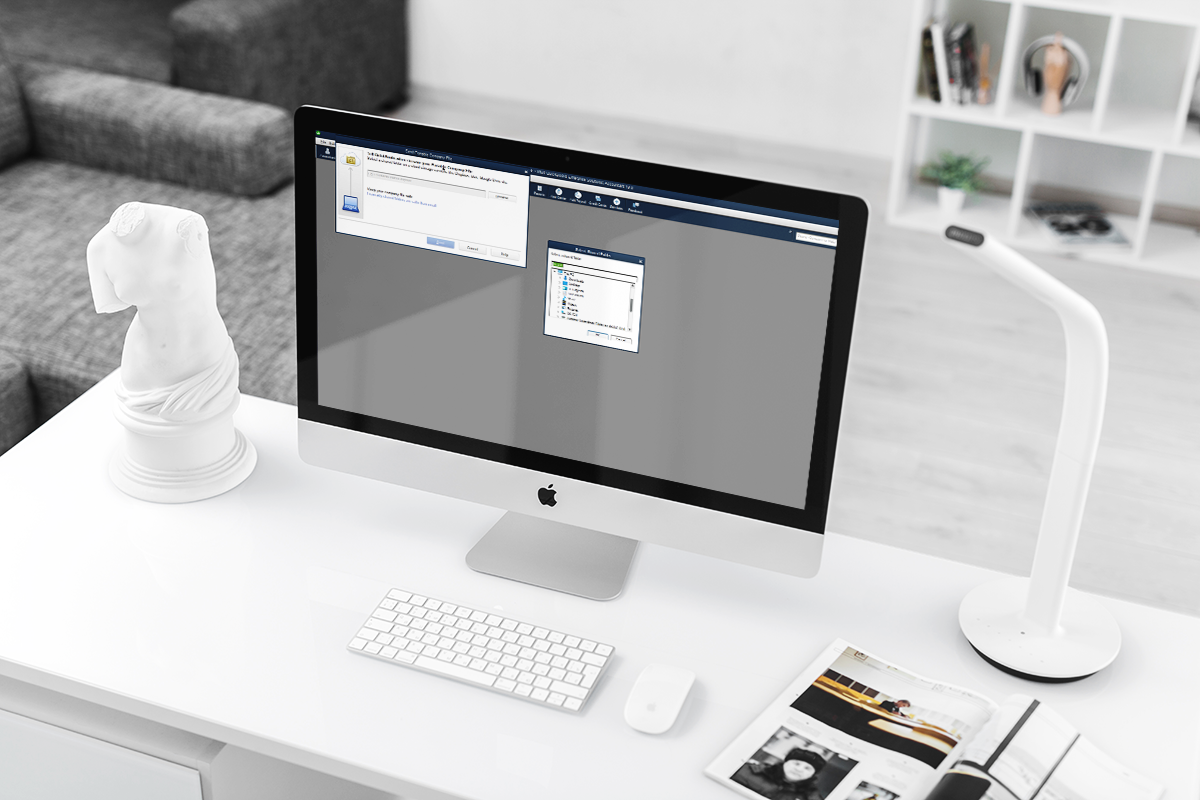
QuickBooks Portable File: How to Create and Restore, and Why
If you’re a long-time user of QuickBooks Desktop, you were likely reminded to back up your company file – either through the logoff process, or encounters with QuickBooks Support. There’s a chance your company has used the same file over a sustained period; we’ll say a year or two. With that, your file would be considerably sizable. Granted, there are multiple storage solutions to archive your backup files – flash drives are popular for their price to storage ratio. What if you’re in a situation where that isn’t a possibility? Enter the QuickBooks portable company file.
What Makes a Portable File Useful for Users of QuickBooks Desktop?
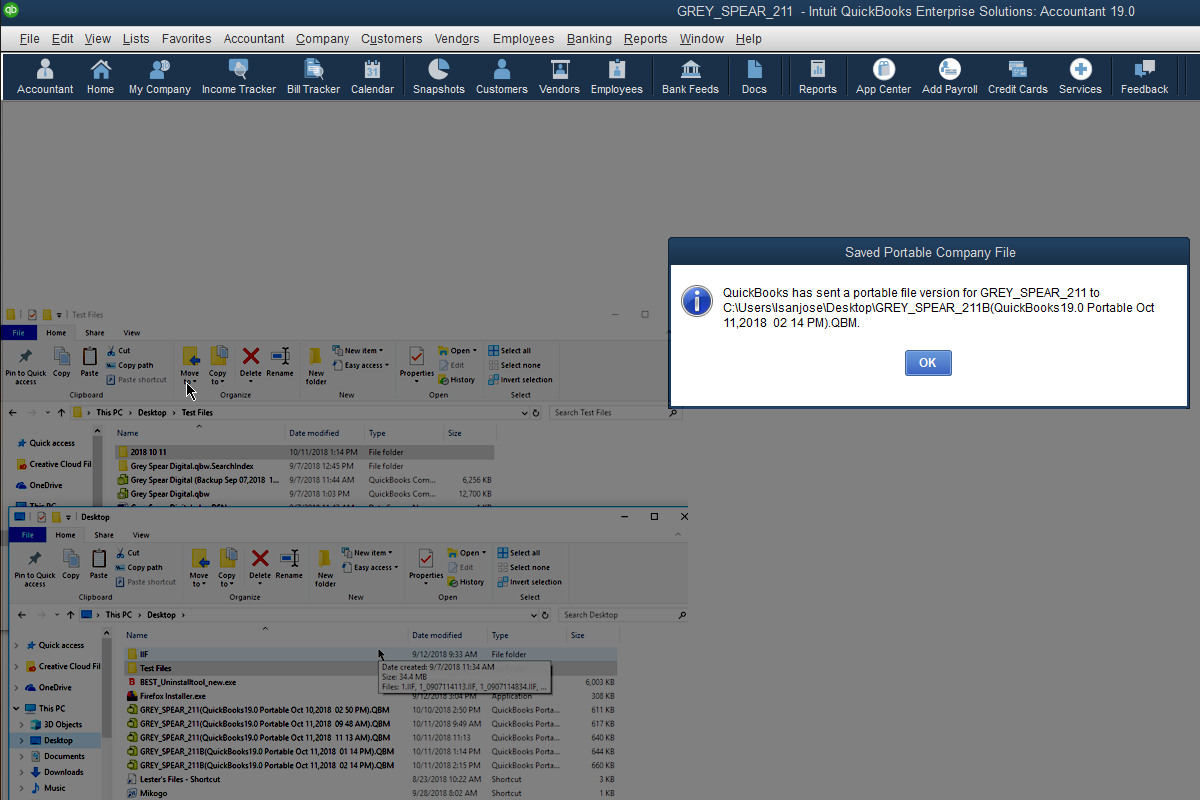
The strengths of a portable company file are significant reduction in size, without time spent the verification process; and re-indexing file data, which made it one of my go-to maneuvers when I addressed data integrity as a previous member of QuickBooks Support.
If you were to tackle data integrity, in textbook fashion, it would be in this order:
- Rebuild the company file.
- Verify File Data
- Manually address errors found in the Verify Log
- Create and restore a portable company file, if all else fails.
- Restore the most recent backup of the company file.
A portable company file’s reduction ratio gives you the opportunity to email a copy of your file, attachment size limitations notwithstanding. Or, if you need something fast while your flash drive is packed with content you can’t delete immediately.
Is There a Catch in Creating a Portable File in QuickBooks?
There are considerations you need to account for, when going this in this direction. It contains only your financial data, meaning it won’t contain the following:
- Letters
- Logos
- Images
- Loan Manager Information
- Fixed Asset Manager (FAM) information
- QuickBooks Statement Writer Information.
It also doesn’t contain the Transaction Log (.TLG) File. This file, though often a thorn in the side of company file performance, is helpful in certain data restoration efforts – since it is used to help restore transaction data, through a specific process.
What are the User Security Implications in a Portable File?

Only the QuickBooks Administrator or an External Accountant user can send a portable file. If you end up having to create and restore a portable file, then you need to asses, or re-assess who would have access to such users, other than yourself.
Is It Easy to Create a QuickBooks Portable Company File?

Creating a portable company file takes only three steps:
- Click “File,” from the top menu.
- Bring your mouse cursor to “Send Company File.”
- Click “Portable Company File.”
You will get a popup where you can change the location where the portable file will be saved and stored. You won’t have the option of changing its name; QuickBooks’ naming convention is such it will clearly label the file as a portable file.
What Do I Need to Know When I Restore a Portable File?
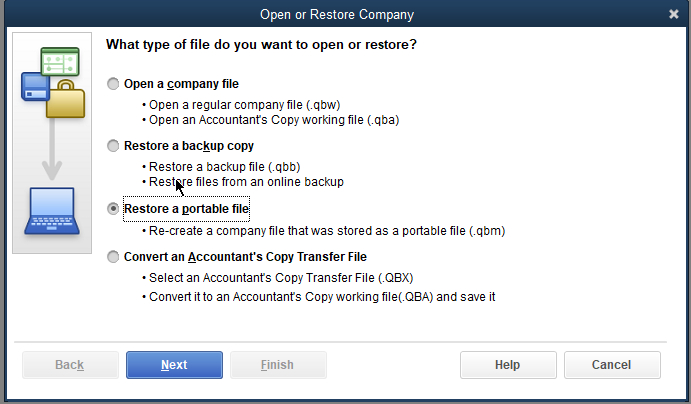
Exercise Discretion in Where Your Restored File is Saved.

You don’t want to overwrite your working file, unless that’s the intention. But, it’s best practice to restore the file, then verify the information and data integrity of the restored file.
Is Restoring a Portable (.QBM) File Different From Restoring a QuickBooks (.QBB) Backup File?

Unlike restoring a backup file through the various locations in the menu tree, there are specific ways to restore a portable file. If you’re in a QuickBooks Desktop Company File already, just take these steps:
- Click on “File,” from the top menu.
- Click on “Open or Restore Company.”
- When the popup appears, click on “Restore a portable file.”
- Click “Next.”
- A popup will appear to “Open Portable Company File.”
- Locate where your portable file is, if the immediately shown location doesn’t have the file you need to restore.
- Once you find it, click “Open.”
- Another popup will appear, asking where you want the restored file to be saved.
- Click “Next.”
- Navigate where you want it saved.
- If you desire to save it in the same space as the last working file, be sure to name it differently to avoid inexplicable overwrites.
- Click “Save.”
If QuickBooks Desktop just launched, take these steps to restore your portable file:
- In the “No Company Open” Window, click “Open or restore an existing company.”
- Like the earlier process, click “Restore a portable file.”
- Click “Next.”
- Once this occurs, you will repeat steps 5 – 12 in the previous example.

You’ll see the restoration process in effect. Depending on how big your file is, the time to restore will vary. If you have an administrator password in place (highly recommended), you’ll need to enter it for the restoration to complete. Once you get the congratulatory popup, and click “OK,” your workspace will be restored.
In Data Damage Situations, Why Wouldn’t I Want to Restore a QuickBooks Backup File First?
Restoring a known good backup company file is an easy step to take, whenever it runs into issues with data integrity. The main factor, in my experience, is time spent. This is something you and your company must weigh, when taking certain measures to resolve them. Which of the following will be more time consuming and less productive?
- Restore a known good back up, and re-enter transactions missing from the most recent backup point.
- Rebuild your company file, then verify it after it’s rebuilt and re-opened.
- A series of manual measures: re-sorting QuickBooks lists; date toggling transactions deemed damaged; delete and recreate transactions; etc.
- Create and Restore a Portable Company File.
- Send your Company File for Data Recovery, re-entering missing transactions – once the file is returned to you.
Many of these listed considerations, as well as those unlisted, depend on the amount of damage done to the data file. If you can personally determine this, that’s wonderful. If, however, you’re still uncomfortable approaching the realm of data integrity, reach out to our ProAdvisors; they’ll be more than happy to dive into what’s causing the data to be in such bad shape, then provide options to resolve it.
What If My Only Option is Restoring a Portable Company File in QuickBooks Desktop?
Key Points For Creating or Restoring a Portable File
For starters, like a backup file, it’s safest to create or restore it onto a Solid-State Drive (SSD) or traditional Hard Drive (HD). If you need to take that file to a flash drive, wait for it to finish creating the file. Once it’s done, copy or move the file to the flash drive. Despite having laid out what a portable file didn’t include once it was made, not all is lost; you can restore missing items for Loan Manager, Fixed Asset Manager, and Statement Writer by knowing where they’re located. We will provide a follow up blog on how to do this in more detail.
Summing Up
Creating a Portable File in QuickBooks Desktop can be a lifesaver during certain circumstances – fitting a copy of your company file into an extremely small space being the typical reason. The other reasons involve troubleshooting data damage affecting your ability to stay in your file reliably, or even start using it. Keep your eyes peeled for our next entry on how to get back items not having been brought over during the portable file process. If you need more clarity on this or assistance with making or restoring a portable file; or you’re having troubles with data file integrity, let us know!



